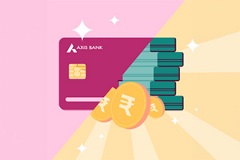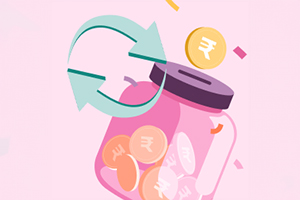Credit Cards offer convenience and flexibility, but they can sometimes lead to overspending. If you find yourself in this situation, don't worry — there are effective strategies to manage and reduce your Credit Card debt. You can convert your balance into manageable monthly instalments or transfer it to a different card. However, the most effective approach often involves taking a Personal Loan.
By converting your Credit Card debt into a Personal Loan through your bank, you can consolidate your payments into one monthly instalment. This method not only simplifies your financial commitments but also helps you move toward financial freedom with more manageable steps.
Reasons to consider Credit Card balance transfers to Personal Loan
Considering a Credit Card balance transfer to a Personal Loan can be a strategic move to streamline your finances and reduce interest costs. Here are a few reasons why this option might be beneficial -
1. Lower interest rates: Personal Loans often offer lower interest rates compared to Credit Cards, which means you can save money on interest over time. This makes it easier to pay down your principal balance faster.
2. Simplified payments: Managing multiple Credit Card payments can be time-consuming. Transferring your Credit Card balances to a Personal Loan consolidates your debt into a single, manageable monthly payment.
3. Credit score improvement: Consolidating your Credit Card balances into one Personal Loan can improve your credit score. It reduces your credit utilisation ratio, a major factor in credit scoring, and shows that you are taking proactive steps to manage your debt.
4. No more Credit Card fees: By transferring your balances, you can avoid some of the fees associated with Credit Cards, such as late fees and over-limit charges.
Steps to convert Credit Card debt to a Personal Loan
Converting your Credit Card debt into a Personal Loan can simplify your finances and potentially reduce your interest costs. Here’s how you can smoothly transition your Credit Card balance to a more manageable Personal Loan -
1. Check your eligibility: Before considering a Personal Loan to take over your Credit Card debt, confirm your eligibility. For instance, Axis Bank will assess your credit score, income and employment status to decide if you qualify for a Personal Loan.
2. Apply for the Personal Loan: Initiate the application process with Axis Bank. You can access Personal Loan amounts up to ₹40,00,000 with flexible repayment options extending up to 84 months. The bank offers competitive interest rates starting at just 11.25% p.a. The entire application procedure is online and paperless.
Ensure you provide all necessary documents required for a Personal Loan, such as proofs of identity, income and residence. Understand the terms thoroughly before you agree.
3. Transfer your Credit Card balance: After your Personal Loan is approved, you can proceed with Credit Card balance transfer to your new Personal Loan. Clear the transferred balance immediately to avoid additional charges in your next Credit Card billing cycle.
4. Repay your Personal Loan: Begin making regular payments as per your loan agreement. Keeping up with your repayments not only avoids late fees but can also improve your credit score.
Also Read: Credit Card Loan vs Personal Loan: Differences, comparison & how to apply
Conclusion
By moving Credit Card debt to a Personal Loan, you can ease your monthly financial burden while taking a significant step towards long-term financial health. Make sure to assess your financial situation, consider the benefits and pitfalls, and choose a lender that offers the best terms and services. This move could be your first step towards a more stable and stress-free financial future.
Disclaimer: This article is for information purpose only. The views expressed in this article are personal and do not necessarily constitute the views of Axis Bank Ltd. and its employees. Axis Bank Ltd. and/or the author shall not be responsible for any direct / indirect loss or liability incurred by the reader for taking any financial decisions based on the contents and information. Please consult your financial advisor before making any financial decision.







